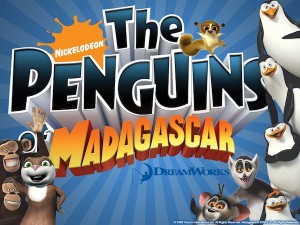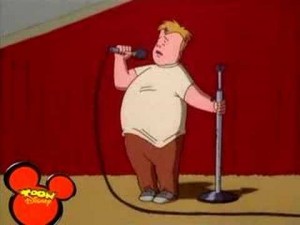Archive for category Television
Six Trends in Shooters that Need to Go Away
Posted by kjohnson1585 in Television, Uncategorized, Video Games, Writing on July 23, 2012
1) The Silent Protagonist
Video games have improved leaps and bounds in such a short amount of time that it’s inexplicable why so many shooting games, first-person or third, still utilize the same tropes and gimmicks that seriously should have died out in 2001. Topping the list is having a completely mute protagonist. Developers design this blank slate figure so the gamer can project him or herself onto the hero, but it’s really an excuse to avoid actually creating a charismatic character worthy enough to save the day. Not to mention the shortcomings of a blank slate; how awkward is it for a female gamer, playing as Gordon Freeman, to be flirted with by Alyx Vance? Let the protagonist speak for him or herself and present opinions on the world around him or her – it’s flat out stupid that the characters around you are screaming obscenities, yet you adhere to a vow of silence.
2) Melee Attacks Being Stronger than Shooting
The attempt to give close-quarter combat an edge or an advantage has led to the proliferation of some baffling results – namely, that a punch, a kick, or a knife stab has equal or superior power as a shotgun blast. Never mind the fact that any gun fired at close range has more stopping power than from a distance, this anachronistic concept defies all logic in an imaginary world gone mad with technological weapons that can shoot through walls and armor that can soak up damage like a sponge. Melee attacks should stun, disarm, or weaken a baddie, but unless that weapon is a Halo Energy Sword or something like that, close-quarter fighting should really consist of “retreating” and trying again.
3) Poor Jumping/Leaping Mechanics.
Metroid Prime redefined what it meant to jump in a first-person shooter. So why haven’t games copied this? They steal everything else for the most part (I’m looking at you, Resistance 3), so why is jumping still a shitty thing to do? Third-person shooters aren’t much better, although at least you can physically see the character as he leaps, but nine times out of ten, it’s directly to the hero’s death, with mechanics that alter with every single leap. (Nathan Drake’s jumping is particularly egregious. Sometimes he leaps like an overweight child, other times he’s gliding through the air, Mario-style.) The dying 3D platformer may have taken the art of quality-jump mechanics with it, which makes the potential new Mirror’s Edge sequel a hellish endeavor. Not to say the first one worked out all that well (despite loving the game).
4) Limiting Weapon Capacity to Two
There’s nothing wrong with limiting the number of weapons you can carry; after all, being a character that can lug every weapon ever is indeed a fairly unrealistic (if convenient) option. However, why in the world is the limit, always, always, at two? Maybe for the heavy weapons, sure, but there’s no logical reason your character couldn’t carry around four to six regular pistols-sized weapons. Some games play around with an inventory system – Deus Ex: Human Revolution comes to mind – but Halo’s limitations kinda makes me wonder why Master Chief is considered a hero in the first place, and Nathan Drake may want to invest in a second holster.
5) Terrible Non-Playable Friendlies
Large-scaled, intense gun fights are always exciting, but you can’t blame being shot in the head when you’re too busy wondering what your computer-controlled teammate is firing at. Why waste graphical power on gun-toting NPCs that are as useless as the civilians you’re trying to save? Bad AI is always a problem, but it’s worse when the badguys are semi-clever while your team is less effective then a box of rocks. What’s worse, as you delve deeper into a game, said teammates, more often than not, disappear. The need for the player to be hero may trump everything else, but at least spend the time to make your squadmates competent to a fault. And try to think of practical ways to remove them from the equation when approaching the endgame. Kill them off, send them on another mission – something that takes the taste out of watching a soldier waste good ammo blasting at a bush.
6) Bullet Sponges
Stupid badguys are one thing; stupid badguys that are essentially robots-built-of-diamonds are another. I’m not sure why, or how, enemies manage to take in so many bullets with minimal-to-no reaction, handling a barrage of attacks with nary a scratch, yet a few bullets at you kill you practically instantly (this goes doubly so on hard/insane levels of difficulty, which suggests we really need to change how we think of challenge levels). Bullet sponges are pretty terrible all around. I understand the need to maintain a certain level of consistent conflict, but opening up the type of reactions to being shot would be a step in the right direction, instead of watching someone soak up bullets like the blob.
Email Interview With Robert Schooley
Posted by kjohnson1585 in Animation, Film, Television, Writing on July 19, 2012
The Penguins of Madagascar is a quietly excellent cartoon: a madcap, zany show that redefined the Madagascar’s cuddly-yet-militaristic team in an over-the-top Brooklyn zoo. Its insular nature made it hard to keep up, but, like Community, rewarded followers with inside jokes, excellent character gags, and nods to past events. Recently, the show finished up their production run, and sooner then later the final episodes will be aired on Nick. [07/19/12 – Edit: Just learned that, today, the show was also nominated for a Primetime Emmy!] Executive producer and writer Robert Schooley took some time out of his schedule to talk about the show, the difference between CGI and traditional animation, and whether the Lunicorns were indeed a My Little Pony parody. Be sure to follow him on Twitter.
TMB: The Penguins of Madagascar seemed to relish in being its own thing instead of hewing too closely to the Madagascar movies. How much of this was intentional from the start? Did Dreamworks or Nickelodeon have reservations in taking the characters in such a different and separate direction?
RS: It was a practical decision. DW didn’t know what the Madagascar sequel stories would be at that point, so the decision was made to feature all of the characters but the four leads and exist in a separate continuity from the features.
TMB: As a followup, what were the challenges, if any, in defining the characters and the show outside of the films?
RS: Skipper was fully defined already, so it was a matter of finding new aspects to the other three to round out the team. Because we were not really related to the movies, we felt pretty comfortable letting everyone develop naturally as we’d invent new comic quirks to have fun with.
TMB: Does the New York setting pose any issues? Since everyone who works on the show is in LA.
RS: Not really. Most of us are from the east coast anyway. I’m sure if we were living there while writing the show more particular real world details might have shown up.
TMB: The director of the first Madagascar film, Tom McGrath, mentioned here that he wanted to avoid “zoo vs. wild” type contentions. Seems like you doubled down on that philosophy. Can you elaborate on it?
RS: It’s such a unique world with it’s own strange logic, I’m not sure the issue really came up much.
TMB: How did ideas for characters and plots come up? It’s impressive how rich and diverse the cast has become in just a few years.
RS: Hardest question to answer. Most ideas just come out of looking to put a character through something. A few stories came out of specifics to the zoo setting, like “Snooze at the Zoo” or webcam, but most were just coming up with funny ways to put characters in conflict with each other, nature or the world.
TMB: While I wouldn’t say the show had a “story arc,” it seems to have a very loose style that allows events, stories, and characters to be called back to, referenced, and revisited. Was there a fear about that being alienating to new audiences?
RS: Always a risk and probably something the network would rather we didn’t do, but all the shows we produce have a rough internal continuity. We like to reward fans who watch every episode. And in this DVR age it’s not hard to do.
TMB: I would like to talk about the animation for a moment. We’ve come a long way since Reboot. How challenging is it to make strong, cartoony movements (squash and stretch, smears and blurs, etc.) via CGI?
RS: We have really great animators in our studios working off very strong board poses. It amuses me when people confuse rendering (i.e. detailed fur) to character animation. On a TV budget and schedule we can’t do the same lush rendering as a feature, but I think we do get every ounce of subtlety and personality out of these characters. We are constantly amazed by the little extra touches the teams in India and New Zealand add to the acting.
TMB: Which do you prefer, traditional or computers?
RS: Apples and oranges. I like both. Kim Possible was a great looking show and I’d do that style again in a minute. A big advantage to traditional is that you can create a much bigger world, since every set and guest character doesn’t have to be laboriously built. And it can be a more stylish look, ideally. But there’s also a great feel of spacial reality in CG that lends itself to the more sitcom sorts of stories that we do on this show, and yet, thanks to the process that’s been refined here at Nick, with genuine cartoon snap and timing that is genuinely fun to watch.
TMB: How did you get into the TV animation business? How’d you get tagged as executive producer of this show in particular?
RS: Started in the mailroom at DIC, a busy studio in the 80’s. Started pitching stories to their shows, got hired on staff. Eventually drafted to Disney, worked our way up to exec producer there. We were recruited to run Penguins after they had already done a first version of a pilot that we came in to rework.
TMB: Favorite character? Favorite episode?
RS: Can’t really pick a favorite character. Honestly they’re all fun to write. I think Skipper is pretty special because Tom created him and can add little touches and ad libs in the performance that surprise and delight us. But I think everybody has added unique touches to their characters. Danny’s King Julien is a constant exploration of how far you can push an ego. I love when Jeff gets to play Kowalski as unexpectedly emotionally fragile. Or when John decided Rico should sing like Michael McDonald. And nothing made me laugh more than James when Private got angry at everybody.
Favorite episode may be “The Penguin Who Loved Me” because it’s the final Blowhole episode and it pays off a lot of running gags from the series. It may end up being the last to air.
TMB: Now that production is finished on the show, what’s next for you and the Penguins? Rumor has it that there may be a movie in the works.
RS: There is a Penguins movie in production at DW, but at this time it’s unrelated to the series. That could always change though, I guess. We, and most of the staff and some of the cast are deep into the next series Monsters vs. Aliens.
TMB: Final question: Are the Lunacorns really the show’s jab at the My Little Pony fandom?
RS: One man’s jab is another’s homage.
The Rare Sighting of the Sensitive Male Lead
Posted by kjohnson1585 in Animation, Television, Uncategorized, Writing on July 16, 2012
If you’re the main character of a TV show, of any genre, you better have some balls. Why sensitive male leads are difficult to come by.
When preparing for my “Prepubescent Girls that Can Kick Your Ass” inventory, a friend of mine mentioned thinking about, essentially, the opposite version: the sensitive male. She was curious about where the low-key, poetry-loving, caring, affectionate, “not-afraid-to-talk-about-his-feelings” men were in our entertainment. I began thinking about this too, and, well, it’s a pretty good question.
I’m currently watching Recess, the Paul Germain/Joe Ansolabehere animated show that appeared on One Saturday Morning, an ABC/Disney block of cartoons that included The Brand-Spanking New Doug, Pepper Ann, and The Weekenders. Recess was pretty much the winner, nailing a full six seasons and two movies. And of the six main characters, Mikey represented exactly what my friend and I were looking for – the sensitive male as a main character (or at least one of many).
It shouldn’t really surprise me, then, to see most Youtube comment expressing their hate of Mikey. It’s disappointing to see that much vitriol – Mikey does nothing narratively wrong or unlikeable – but it is somewhat difficult to muster a lot of support for his emotional outbursts and poetic diatribes on competition, justice, and Santa Claus. Part of the issue is that it’s hard to understand why exactly Mikey is the way he is. We don’t get too much on his childhood or parents, unlike the rest of the cast, and seeing him struggle with standing up for himself, even for simple things, is a bit hard to swallow, even for kids. And then it hit me: sensitive male leads are, narratively, dead-weight.
Well, not all of them. (I point one out later in the piece that may be an exception.) But for the most part, sensitive males, being more introverted, quiet, and non-confrontational, push against the narrative necessity for conflict to brew. If the character can’t, or is unwilling, to engage in conflict, then it’s hard to create a plot using that archetype. Conflicts that do involve them often involve “growing a backbone,” becoming more confident and standing up to bullies. But few pieces of entertainment touch upon the nature of sensitivity as a positive development towards a goal, unless it’s involves romancing the opposite sex.
(Keep in mind, a lot of what I mentioned can be applied to sensitive female characters too; it’s unfortunate but true that social constructs allow sensitive female characters to be more prevalent, yet we see more or them as progenitors of their own development – see Fluttershy from My Little Pony or Kaylee from Firefly. It also helps that Josh Whedon and Lauren Faust are very talented. In other words, we’re used to, and comfortable with, sensitive female characters. Not so much with males.)
There is a unique exception to this: Private, from The Penguins of Madagascar TV show on Nickelodeon, a surprisingly excellent show in its own right. Private, the “newest” recruit in the penguins underground, paramilitary organization, is indeed a sensitive soul, enjoying The Lunicorns, being a neat-freak, and not afraid to showcase his feelings, to the chagrin of his team. But quite often, Private is shown to be smart, pragmatic, and a hell of a soldier, both in cunning, speed, and ability to fight. It’s a rare sight – not even the highest-rated TV shows have male characters that can exhibit both sensitivity and bravado. And, consequently, he’s become one of my favorite characters on TV right now.
But even in the case of Penguins or Recess, the sensitive male is not the SOLE lead, but part of a group dynamic. I’d be hard pressed to find any show that really had or has a soft-ball character leading a narrative charge. There’s Lazlo from Camp Lazlo, I suppose, although his sense of adventure may overshadow his sensitive nature. The brief encounter I had with the show Scaredy Squirrel had a character similar to Private, sans fighting ability, so maybe he is the true exception – yet no one watched the show, which doubles down on my “lack of popularity” theory.
Are there any male lead characters out there that are relatively well-know? I’m thinking no, but I’m definitely willing to hear people out in the comments below.




